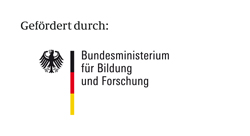Lehrte, December 7th 2017 – 14 German companies and organizations have combined forces in TACNET 4.0 - Tactile Internet, a project to create a standard system for real time industrial communications. The so called "tactile internet," based on 5G wireless technology, is being further developed with the support of the Federal Ministry of Education and Research (BMBF) in this project for the digitalization of production and robotics. Focusing on the needs of the market, the project serves as a basis for a wide range of industrial applications.
Germany is scheduled to launch the 5th generation equipment and infrastructure (5G) in the year 2020. The future network will enable very high data rates and be a so called "tactile internet," that is to say, it will be capable of reaction times of less than a millisecond that are no longer perceptible for humans. However, the highest reliability and real time communication required for networked production (Industrie 4.0) will not be supported end-to-end in the first phase. As a contributing partner in the BMBF sponsored program "5G: Tactile Internet," TACNET 4.0 is developing the required concepts and algorithms and creating the right conditions for many Industrie 4.0 applications such as direct interaction between humans and machines or wireless process controls.
Minimal latency as the basis for various applications
An important aspect of TACNET 4.0 is the secure transfer of data with minimal delay between local and multi-site users, for example, for remote control of equipment. Prof. Dr. Hans Schotten, head of the research department for Intelligent Networks at the German Research Center for Artificial Intelligence (DFKI) in Kaiserslautern and coordinator of TACNET 4.0 explains: "Demanding and, until now, impossible to implement scenarios in process and manufacturing automation will be enabled by innovative 5G technologies. Such a scenario might be the remote control of mobile equipment or robots that are designed to operate in dangerous environments or the operation requires experts that are not locally available. The project is investigating new approaches like Big Data analytics, Edge-Cloud supported real time control, and remote services."
Dr. Peter Rost, Nokia Bell Labs, added: "The tactile internet is key to the comprehensive networking of humans and things, as this technology will contribute to added industrial value and facilitate everyday living for people. Nobody is developing the application scenarios of tomorrow in isolation. It takes extensive cooperation among various branches of industry. We are very pleased that we are able, together with our TACNET4.0 partners, to drive this development of the tactile internet."
Open interfaces guarantee adaptability
The greatest challenge facing TACNET 4.0 is to integrate future 5G networks and other current as well as new industrial communications systems to support a wide range of industrial applications, including the integration of field bus systems. TACNET 4.0 relies on open interfaces, so that network functions can be expanded, for example, through apps. Additionally, initial attempts are being undertaken to use mobile wireless networks for wide area coverage, instead of only the current local wireless sensor networks or WLAN.
14 partners and a 3-year term
In addition to DFKI and Nokia Bell Labs, the TACNET consortium includes ABB Research Center, Ascora GmbH, Robert Bosch, CommSolid, Götting KG, Institute Industrial IT (inIT) of the OWL University of Applied Sciences in Lemgo, MECSware, NXP Semiconductors Germany, OTARIS Interactive Services, University of Dresden (Vodafone Chair of Mobile Communication Systems and the Deutsche Telekom Chair of Communication Networks), University of Bremen as well as associated partners: BASF, Busch-Jaeger, Hirschmann Automation and Control, Innoroute, Phoenix Contact Electronics, Vodafone Germany, VDMA (Mechanical Engineering Industry Association), and it’s OWL (it’s OWL stands for Intelligent Technical Systems OstWestfalenLippe).
DFKI (Prof. Dr. Hans D. Schotten) and Nokia Bell Labs (Dr. Peter Rost) are jointly responsible for project management. The Federal Ministry of Education and Research (BMBF) officially launched the project with approximately 6.3 million euros in April 2017. The project term is three years.
Götting contact person: Dipl.-Ing. Thomas Neugebauer, head of development
You can find more information on this project on the following sites:
- www.tacnet40.de, Project Homepage
- BMBF Project Description
Götting Quick Guide Last updated: 04/2023
Götting KG founded in 1965, ist an innovative company placed in Lehrte near Hannover (DE) and works worldwide.The company develops and produces wireless data communication systems and sensors for automatic track guidance of so-called automated guided vehicles (AGV). As far as we are informed Götting KG has the largest product range of different components for trackguiding AGV.
Further main topics are traffic technology, RF measuring, wireless data communication in general as well as customized developments for car manufactureres, electronic- and radio broadcasting industry. Currently our company employs 90 professionals of which about 30 are experienced masters in engineering and are responsible for research and development.
The core competency of FOX – a special department of Götting KG – is focused on the automation of serial vehicles, especially for the outdoor area (trucks, pay loaders, fork lifts etc.).



